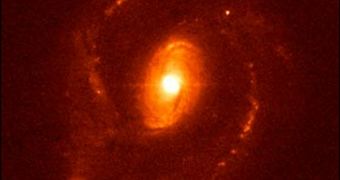c, G, π, all three are fundamental constants that rule the very existence of our universe. The first represents the speed of light, exactly 299,792,458 meters per second, the second is the gravitational constant, equal to 6.67300 ? 10-11 m3 kg-1 s-2, and the third is pi, approximately equal to 3.14159, which is the ratio of a circle's circumference to its diameter in Euclidean geometry.
Beginning with Paul Dirac in 1937, some scientists have speculated that physical constants may actually decrease in proportion to the age of the universe. Scientific experiments have not yet pinpointed any definite evidence that this is the case, but now, researchers in Australia have obtained a new limit on how much one fundamental constant - the ratio of the electron and proton masses - is changing with time.
They did this by analyzing a distant galaxy in space and by calculating how it absorbed the light from a quasar. The final result, 10 times more accurate that all previous measurements, partly confirms our current understanding of physics.
Partly, because they found that ? cannot have decreased by more than 4 ? 10-16 per year, and cannot have increased more than 2 ? 10-16 per year. But it's not as stable as predicted.
Victor Flambaum and Michael Kozlov of the University of New South Wales in Australia have brought a new level of accuracy to the technique by incorporating an analysis of an "inversion spectrum", which is produced when atoms in molecules absorb light and quantum-mechanically tunnel to a higher energy level.
Electron tunneling is a process that happens with a probability depending more on ? than the absorption lines in the rotation spectrum, thus enabling any time variations in ? to be calculated more accurately.
Well, it's a good thing constants are "almost" constant, and if this doesn't seem very interesting, you might want to think about the fact that if the strong force were just 1% stronger than it is today, for example, carbon could not be produced in stars and we would not be here at all.

 14 DAY TRIAL //
14 DAY TRIAL //